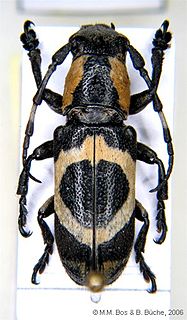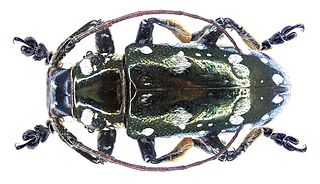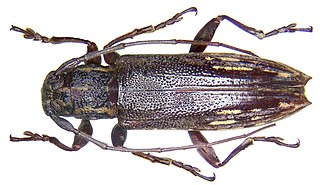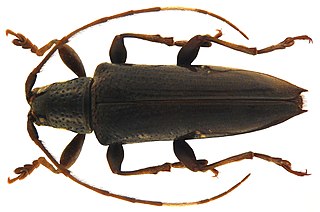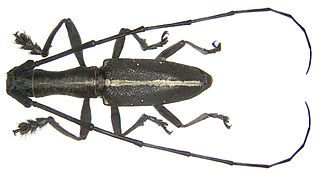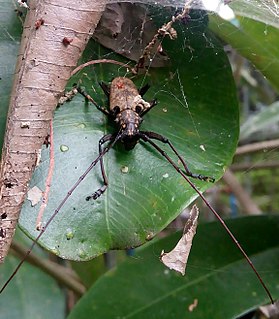| Falsepilysta | |
|---|---|
 | |
| Falsepilysta roseolata | |
| Scientific classification | |
| Kingdom: | |
| Phylum: | |
| Class: | |
| Order: | |
| Suborder: | |
| Family: | |
| Subfamily: | |
| Tribe: | |
| Genus: | Falsepilysta |
| Type species | |
| Epilysta guttata Aurivillius, 1924 | |
Falsepilysta is a genus of beetles in the family Cerambycidae, containing the following species: [2]

Beetles are a group of insects that form the order Coleoptera, in the superorder Endopterygota. Their front pair of wings are hardened into wing-cases, elytra, distinguishing them from most other insects. The Coleoptera, with about 400,000 species, is the largest of all orders, constituting almost 40% of described insects and 25% of all known animal life-forms; new species are discovered frequently. The largest of all families, the Curculionidae (weevils) with some 83,000 member species, belongs to this order. Found in almost every habitat except the sea and the polar regions, they interact with their ecosystems in several ways: beetles often feed on plants and fungi, break down animal and plant debris, and eat other invertebrates. Some species are serious agricultural pests, such as the Colorado potato beetle, while others such as Coccinellidae eat aphids, scale insects, thrips, and other plant-sucking insects that damage crops.
- Falsepilysta albostictica Breuning, 1939
- Falsepilysta bifasciata (Aurivillius, 1923)
- Falsepilysta guttata (Aurivillius, 1924)
- Falsepilysta laterimaculata (Heller, 1924)
- Falsepilysta ochraceomaculata (Schwarzer, 1931)
- Falsepilysta olivacea (Schwarzer, 1931)
- Falsepilysta rosselli Breuning, 1982
Falsepilysta albostictica is a species of beetle in the family Cerambycidae. It was described by Breuning in 1939.
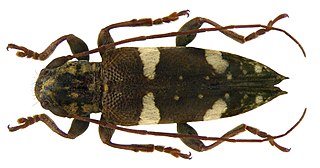
Falsepilysta bifasciata is a species of beetle in the family Cerambycidae. It was described by Per Olof Christopher Aurivillius in 1923.
Falsepilysta guttata is a species of beetle in the family Cerambycidae. It was described by Per Olof Christopher Aurivillius in 1924.
